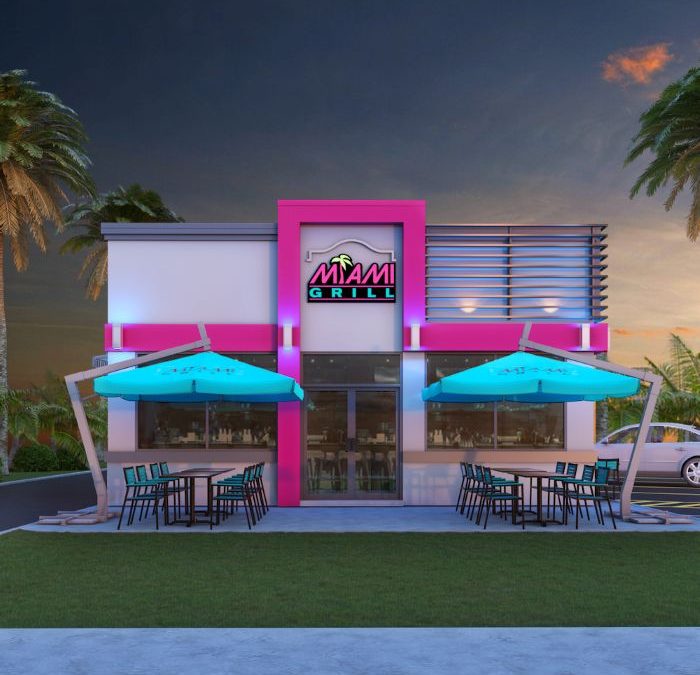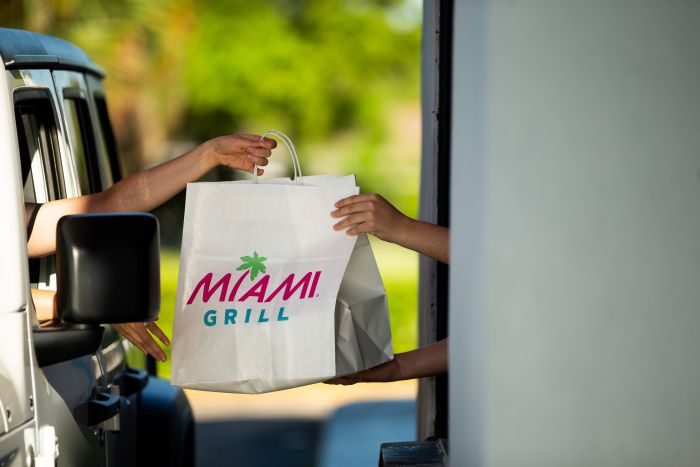Technology, training and other strategies to help franchises keep high-quality menus affordable
By Jonathan H. Vogel, CEO of Miami Grill
As food costs rise, fast-casual restaurants often respond by raising prices or buying cheaper products. It’s a logical reaction — and without making other changes, it’s a short-sighted one. Savvy customers will quickly realize they’re paying more for a less satisfying meal and could start looking for a new place to spend their dining dollars. A better approach is to make adjustments to a few areas of restaurant operations, which won’t completely solve the pricing problem but can reduce the pain.
No restaurant can absorb the rising food and labor costs without turning to guests for help and charging more. But there’s only so far the price can go without verging into full-service pricing without the full service. Restaurants that want to stay affordable without sacrificing quality can invest in new technology, plan menus more purposefully and train staff to work more efficiently. All of these strategies add value so that even if prices have to rise, the guest feels the experience is worth paying a little more for.
Make Smart Menu Changes
Meal choices can be simplified without sacrificing variety or quality. Take a modular approach in which a few core ingredients can be used across various styles, from bowls to tacos, which feels like more choice. Create four to six signature dishes to simplify ordering and speed up prep. Giving guests a build-your-own option makes it fun.
Focus on high-margin core items that customers crave and limit seasonal or low-volume offerings that increase inventory complexity.
Call out these values clearly and emphatically on the menu board. Casual dining guests shouldn’t have to read through a complicated display, so be sure it grabs their attention quickly.
Embrace Technology
Instead of automatically cutting staff to reduce labor costs, try attacking the issue with technology.
Labor costs are more complex than higher wages. Sometimes, they can be better controlled with digital solutions like scheduling tools, mobile apps, kiosks, kitchen workflow systems and automatic prep or cooking equipment.
No one’s job has to be endangered by these tools, which reduce waste and streamline work processes. Unless you have someone who does nothing but take orders on the phone (which is doubtful), switching to a mobile app means that person can be shifted to help with order prep — and orders will be fulfilled more quickly. Automatic cooking systems still need human operators but require less attention, so they can also be moved into a neglected area like customer service.
If a price increase becomes inevitable, digital tools can analyze profitability and identify which items can bear price increases. They can also monitor the new prices to see how they’re affecting profitability.
Train Staff for Consistent Quality
None of these strategies means anything if the staff doesn’t understand why they’ve been added and how to use them. Training is crucial in a franchise restaurant, which demands consistency across locations.
At Miami Grill, we place a high value on staff training because we have so many locations; we have to make sure each one delivers a uniform experience wherever the guest dines. Before we open a new location, our corporate employees spend a few weeks training and developing the restaurant team. We then follow up with consistent restaurant visits and inspections from the corporate trainers and our operations team.
Focus on areas that directly affect food cost, like over-portioning. An extra few ounces of meat in a gyro may not matter to the team member putting together the platter but doing that all day long adds up.
Reinforce procedures that protect quality, from food prep to packaging and presentation.
Above all, empower employees to catch and fix issues before orders reach the customer. You can’t be everywhere, so you’ll have to trust them.
All About the Value
In conclusion, before reflexively upping prices, see what can be improved in the kitchen or at the order counter. Whether tightening back-of-house procedures or streamlining the menu, restaurants can absorb some higher food costs by keeping value in mind.
Real value transcends price. Anyone can attract guests with a $5 meal of a burger, fries, drink and dessert, but the guest who’s hungry for more than a cheap price won’t find it very satisfying (either as a dining experience or in the small portion size of each component).
This is where higher-quality franchise restaurants have the advantage over cheaper fast-food options. Guests come to us for meals that cater to a variety of customers, expose them to new cuisines and provide straightforward service that respects their time. They’re willing to pay a little more for all this, but it’s beneficial to instill loyalty and positive brand sentiment through deals and value offers that make sense for the brand and for its business.
Jonathan H. Vogel is Chief Executive Officer of Miami Grill, which serves authentically prepared favorites like cheesesteaks, gyros, wings and burgers and more. He has extensive experience in restaurant management and operations and has owned and operated more than 80 QSR restaurants.




